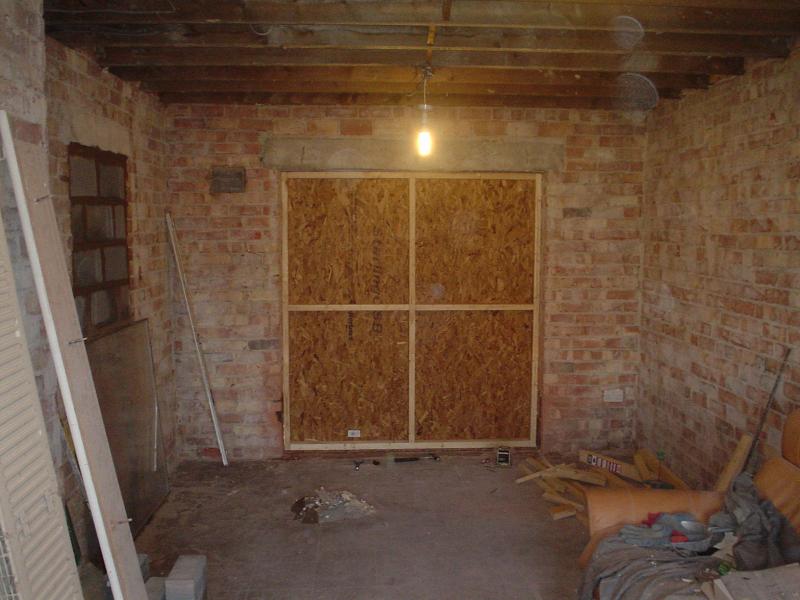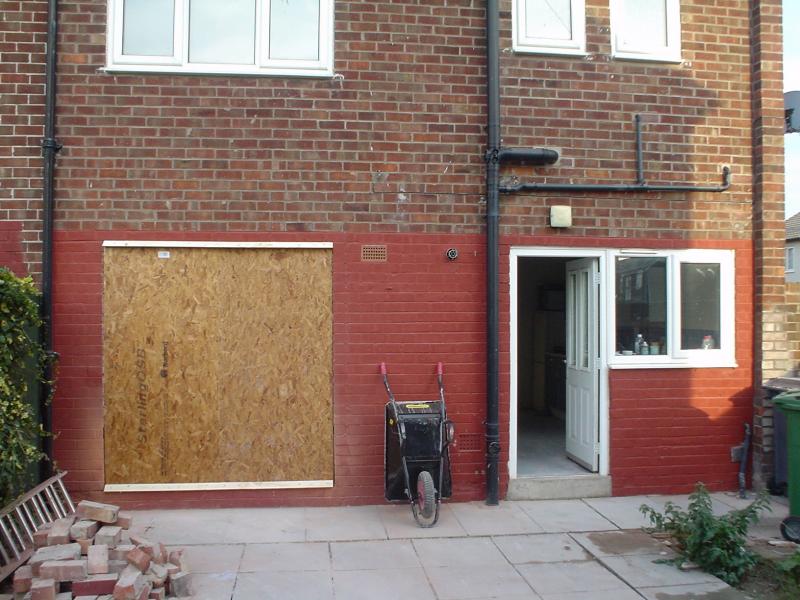Would be grateful for a bit of advice.
I have an opening at the back of my house ready for french doors to be fitted. The width of the opening is 75 inches wide (1905mm) and the doors that I have are 62 inches wide (1575mm) (Major bargain as they only cost me a fraction of what made to measure ones would). Now obviously the opening will have to be closed somewhat and I'm after advice re the practicality of either toothing the extra bricks in or using one of those tie-in jobbies (have used them in the past but the damn name escapes me at the moment) I'm sort of hedging towards using tie-ins as when the house was built the vertical cavity was closed by turning the half bricks at the end of the wall so that they spanned the cavity, so it would be a pain knocking them out. Now the doors don't need to be central in the opening as I believe it would make better sense to have them slightly offset to prevent having to put small slivers of brick at the ends.
The main question is can I use a tie in or does it have to be toothed? The aesthetics aren't that much of a major concern as you will see by the attached picture because the wall in question is painted so I believe the eye won't be drawn to the fact there is a straight vertical joint (plus there will be a small conservatory fitted eventually so that wall will eventually be plastered but thats a year or two off at the moment) but will the joint be sufficiently strong enough to take the doors (they are Rationel hardwood doors and open internally) and also not upset the buildings regs inspector when he has a look. The hose is constructed from imperial sized brick so will I have to use the same or can metric ones be used?
I have an opening at the back of my house ready for french doors to be fitted. The width of the opening is 75 inches wide (1905mm) and the doors that I have are 62 inches wide (1575mm) (Major bargain as they only cost me a fraction of what made to measure ones would). Now obviously the opening will have to be closed somewhat and I'm after advice re the practicality of either toothing the extra bricks in or using one of those tie-in jobbies (have used them in the past but the damn name escapes me at the moment) I'm sort of hedging towards using tie-ins as when the house was built the vertical cavity was closed by turning the half bricks at the end of the wall so that they spanned the cavity, so it would be a pain knocking them out. Now the doors don't need to be central in the opening as I believe it would make better sense to have them slightly offset to prevent having to put small slivers of brick at the ends.
The main question is can I use a tie in or does it have to be toothed? The aesthetics aren't that much of a major concern as you will see by the attached picture because the wall in question is painted so I believe the eye won't be drawn to the fact there is a straight vertical joint (plus there will be a small conservatory fitted eventually so that wall will eventually be plastered but thats a year or two off at the moment) but will the joint be sufficiently strong enough to take the doors (they are Rationel hardwood doors and open internally) and also not upset the buildings regs inspector when he has a look. The hose is constructed from imperial sized brick so will I have to use the same or can metric ones be used?




